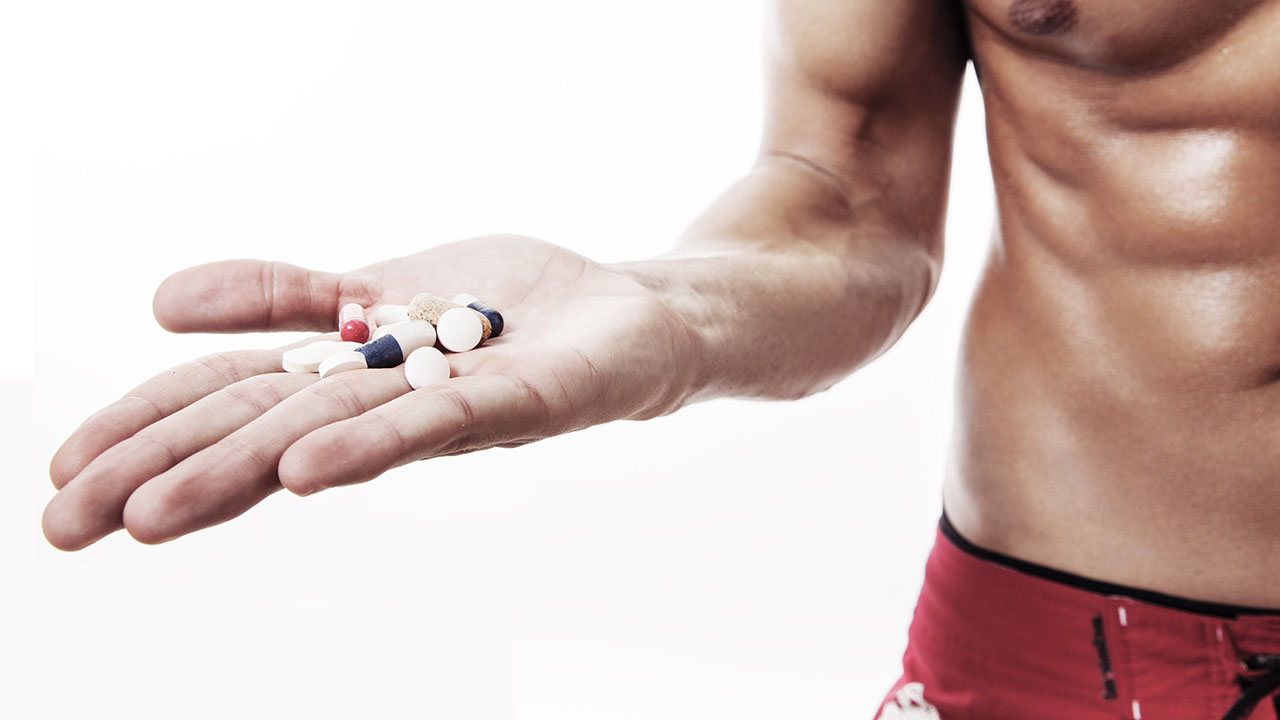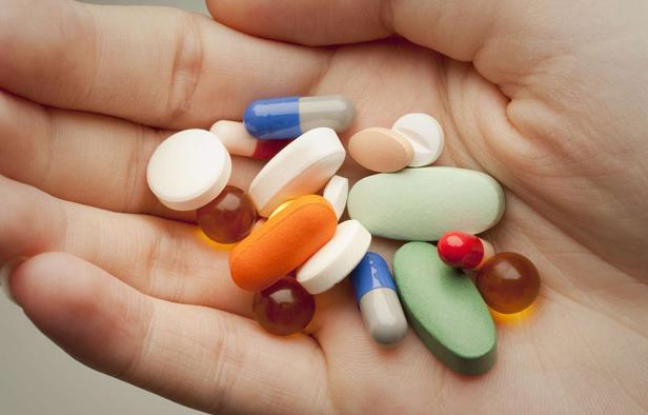The Top 10 Supplements for Men
The greatest moment in the history of supplements came on September 1, 1998. That’s when a sportswriter challenged Sammy Sosa on how he could compete with the androstenedione-assisted Mark McGwire. In reply, Sosa uncorked a shocker: He owed it all—wink—to Flintstones vitamins. Coincidence or not, after Sosa bunny-hopped and blew a kiss to the pill makers, the market soared, with $17 billion in sales in 2000.
So that you spend your share wisely, we asked shrewd judges of vitamin talent to name a supplement all-star team for men. Judge your strengths and weaknesses, and pencil in a lineup that will work for you.
- BORON TO PROTECT YOUR PROSTATE
Men with the highest boron intakes are 65 percent less likely to develop prostate cancer than men with lower levels, studies show. American men have one of the lowest boron intakes in the world. Taking a supplement is a good first step.
How much? 3 milligrams (mg) a day. It doesn’t just fight cancer: USDA researchers found that this is the best dosage to improve memory and concentration.
Tip: It’s not in every store, but GNC carries it. If you can’t find it, eat raisins and almonds.
CALCIUM TO LOSE WEIGHT AND STRENGTHEN BONES
Most men don’t get the recommended 1,000 mg of calcium a day (a cup of milk has 300). Men with the highest calcium intakes weigh less on average than men consuming less calcium. But Vitamin D alone won’t cut it.
How much? Aim for 1,200 mg calcium citrate—half in the morning, half at night, to maximize absorption. Avoid coral calcium, which can be full of impurities.
Tip: If you already eat three servings of dairy a day, you won’t need the excess calcium. There’s a risk you may exceed the maximum intake of 2,500 mg
- CHROMIUM TO WARD OFF DIABETES
You may know it as a muscle-building supplement, but if you’re overweight or diabetes runs in your family, “taking chromium is one of the best things you can do to help keep insulin levels where they belong,” says Richard Anderson, Ph.D., a researcher with the USDA. Chromium improves the body’s sensitivity to insulin, making it easier to keep blood-sugar levels under control.
How much? 35 micrograms (mcg) a day. Check the label for “chromium picolinate,” the form that studies have found to be the most effective.
Tip: If you already are diabetic, ask your doctor if you should take 200 mcg, Anderson says.
COENZYME Q10 TO BOOST ENERGY
Your body produces coenzyme Q10; it helps cells manage your body’s energy supply. But as you get older, production decreases. The only way to get back up to youthful levels is by taking a supplement. Recent studies suggest that coenzyme Q10 may fight cancer, Parkinson’s disease, and Huntington’s disease, and may thin the blood to help prevent heart disease. Q10 is also packed with free-radical-fighting antioxidants, which can slow the signs of aging.
How much? Researchers recommend 100 mg a day. You won’t find Q10 in a multivitamin or get any useful quantity from food.
Tip: If you’re taking statins, which can reduce Q10, consider upping your intake to 200 mg.
CREATINE TO BOOST MUSCLE AND MEMORY
Researchers at the Medical College of Wisconsin found that men taking creatine for just 2 to 3 months increased their maximum bench presses by an average of 15 pounds and their squats by 21 pounds. Australian researchers say memory and intelligence test scores improved after just 6 weeks of creatine use.
How much?5 grams (g) a day, mixed with whey in a protein shake for maximum benefit.
Tip: Some men don’t respond to creatine by itself. Mixing it with large amounts of sugar can help turn nonresponders into responders.
- FOLIC ACID TO CUT ALZHEIMER’S RISK
Folic acid helps prevent clogged arteries and improves bloodflow to the brain by keeping down levels of homocysteine, an amino acid that increases your risk of blood clots. High homocysteine levels are associated with early warning signs of Alzheimer’s, such as dementia and memory loss. Researchers in Sweden found that Alzheimer’s patients are more likely to have folic acid deficiencies.
How much? 500 mcg a day, which could help lower homocysteine levels by 18 percent or more. Food sources include citrus fruit, beans, and fortified breads and cereals.
Tip: Certain heartburn medications, such as Tagamet, can deplete levels of folic acid.
GLUCOSAMINE TO GREASE YOUR JOINTS
You don’t have the same amount of cartilage in your joints that you had at 19 — maybe you’ve noticed. To reverse the damage and actually rebuild cartilage, take glucosamine, made from the shells of crabs and lobsters. In a 3-year study of 200 people with joint problems published in the Lancet, glucosamine reduced joint pain and stiffness by up to 25 percent and helped prevent the progression of osteoarthritis in the knees. The British Journal of Sports Medicine says that 88 percent of people with joint problems reported less pain after 12 weeks of treatment. But joint pain isn’t the only problem that settles in as you age. Get the best foods for your 30s to ward off problems like slow metabolism and high blood pressure.
How much? 1,500 mg a day. Brands that combine glucosamine with chondroitin are fine.
Tip: Rubbing a cream made with glucosamine on a sore joint may relieve pain, according to an Australian study.
OMEGA-3S TO PROTECT YOUR HEART
Omega-3 fatty acids keep blood pressure and triglyceride levels low and the heart beating regularly. They make blood slicker, reducing the risk of clots and blocked arteries. Studies show that men with the highest omega-3 levels have the lowest risk of dying of heart disease.
How much? For healthy guys, 1,000 mg a day. Those with heart problems may need 2,000 to 4,000 mg. But check with your doctor—too much can increase your risk of catching a cold.
Tip: Our favorite is Omega Brite, an especially pure brand that comes in 500-mg gelcaps, so you’re not popping pills all day. Take omega-3s with meals so you don’t burp up a fish scent.
SELENIUM TO FIGHT OFF CANCER
“No other single nutrient appears to prevent cancer more effectively than selenium,” says Gerald F. Combs, Ph.D., director of the USDA’s Grand Forks Human Nutrition Research Center. It basically forces cancer cells to self-destruct. Combs’s studies have linked increased selenium consumption to a decreased risk of cancers of the prostate, colon, and lungs, among others.
How much? 200 mcg a day—more when you’re sick. Research on mice, done at the University of North Carolina, suggests that low levels of selenium may make it easier for viruses to mutate, worsening symptoms of the flu.
Tip: Nature’s selenium supplement is the Brazil nut, which measures 100 mcg per nut.
VITAMIN E TO SLOW THE EFFECTS OF AGING
This is one of the most potent antioxidants. “Vitamin E may help reduce the risk of certain eye diseases, heart disease, cancer, even Alzheimer’s disease,” says Jeffrey Blumberg, Ph.D., a professor of nutrition at Tufts University. Bonus: Studies show it also reduces muscle damage after exercise.
How much? Up to 400 international units (IU) a day, since most people get just a fraction of that from their diets. (A typical multivitamin has 45 IU.) You can also increase your intake by eating more nuts and oils.
Tip: Buy natural vitamin E (d-alpha tocopherol) rather than synthetic (dl-alpha tocopherol), which is harder for the body to use.
HONOR ROLL
You still need to take a multivitamin. It’s one of the best ways to reduce your risk of a number of ills, including heart disease, stroke, and diabetes. Our favorite? Centrum Silver, which contains 100 percent of your recommended intake of 16 core nutrients, along with additional doses of 15 other disease fighters—such as lycopene, lutein, and selenium. (Ignore the “for adults 50+” on the label—it’s great for men of all ages.)
An added bonus: Unlike other multis, Centrum Silver is free of iron—a mineral that can increase some men’s risk of heart disease and Parkinson’s disease.
Source: menshealth
“The Top 10 Supplements for Men” by: ELIZABETH WARD


